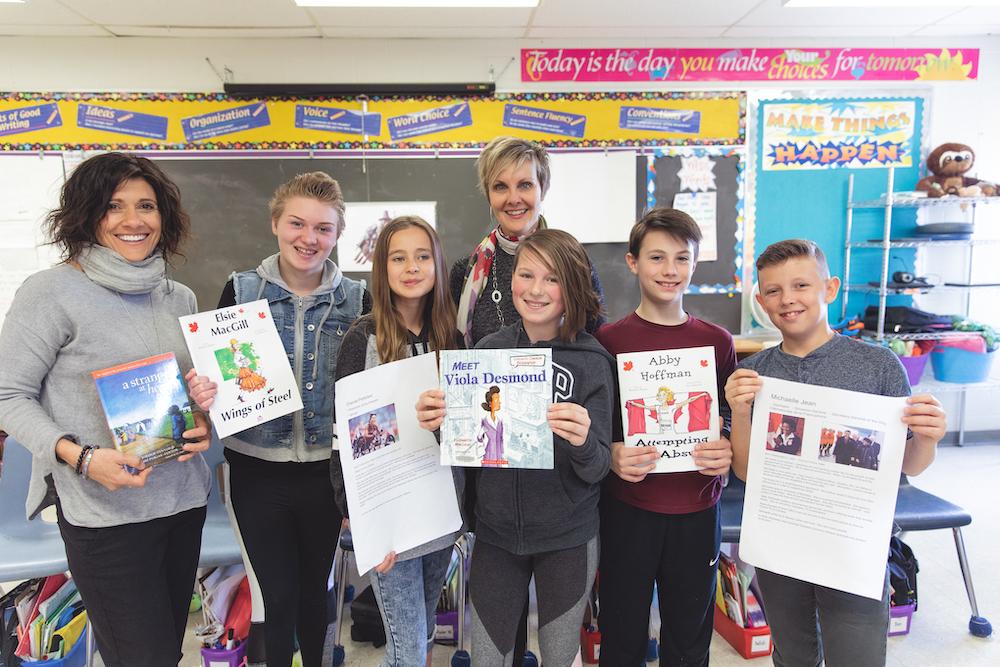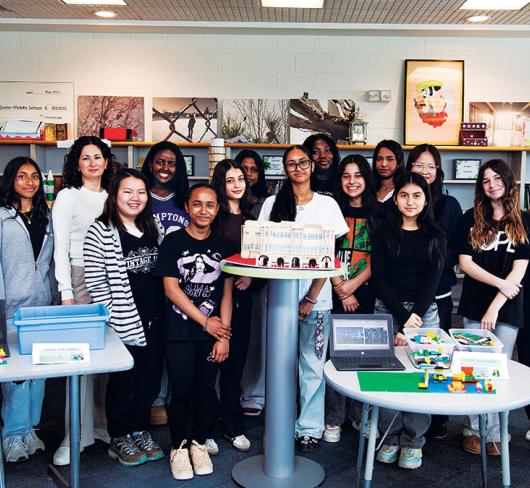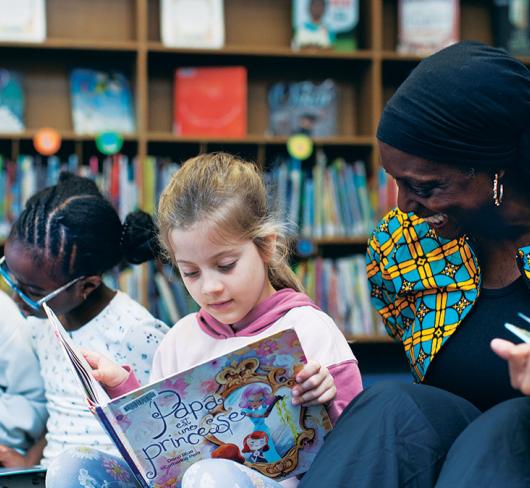
Can You Hear Her Voice?
A group of Brighton students from grades two through eight were recently asked to come up with a list of amazing Canadians. These names leapt from their lips: Connor McDavid; Justin Trudeau; Terry Fox; John Tavares.
This went on for a few minutes before I asked them if there was a pattern to the list. None of them initially saw what I was hoping they would. But as we reread the names it soon dawned on them: not a single name among those mentioned was a woman.
I asked the students to consider a question. Has Canada’s history been bereft of incredible Canadian women or was their absence from the list a result of their stories not being told?
The students were certain there were amazing women who had no doubt accomplished incredible things. It was simply that we did not know who they were and what they had done.
And so, I asked the students, “What might we conclude from the fact that Canadian women have done amazing things, just like Canadian men, and yet we don’t know anything about them?” Their responses were astonishing. “Maybe people will think [Canadian] girls don’t want to become famous,” a seven-year-old suggested. “Maybe people will think girls don’t know how to become famous,” the boy beside her added.
The traditional focus of Canadian history on the accomplishments of White men has meant that many stories and perspectives – but particularly the diverse stories of women – are missing. While this has been changing in recent years, there is work to be done in our classrooms to ensure that students learn a history that foregrounds the stories, accomplishments and contributions of women, taking into account that stories of women who have intersecting identities (who are racialized, Indigenous, living with a disability, LGBTQ) are further marginalized. The reality is that if girls don’t see themselves as complex characters in a diversity of roles, if they don’t see themselves in the women who resisted, fought for and organized to make change, they are limited by default.
Gender Equality Week
Two and a half years ago, I requested a meeting with my Member of Parliament and the Status of Women Minister Maryam Monsef. I presented the idea of having a week where we commemorate and champion the accomplishments of awesome Canadian women. This vision became a Private Member’s Bill, which was considered and debated in the House of Commons and Senate. Bill C309 – The Act to Establish Gender Equality Week – is now federal law. Gender Equality Week began in 2018 and will be recognized every fourth week of September going forward.
The reflective power of role models hasn’t escaped Minister Monsef who told me, “She can’t be her if she can’t see her.” If we want girls to grow up to be leaders, we must show them women leaders. If we want boys to grow up to understand and embrace equity we must show them strong, competent, intelligent and successful Canadian women. The content must be deliberate, purposeful and genuine. It cannot be taught only on International Women’s Day or for the month of October during Canadian Women’s History Month.
No matter how incredible a commemorative week is, it doesn’t make any difference at all if educators don’t have sufficient, quality materials to use in their classrooms. A search for age-appropriate material about the remarkable women in Canadian history didn’t turn up as many books as I had hoped, and I realized that one way I could start filling this gap was by writing.
My passion for storytelling runs deep and I’ve concentrated on understanding the neurological power of storytelling. I have delved deeper into this idea of creating engaging and accessible information and content about the history of women in Canada. In my free time, I have begun writing storybooks about women who were or are heroic figures. My first three books focus on Abby Hoffman, who broke the gender barrier in minor hockey and then again at university; WWII aeronautical engineer, Elsie MacGill; and iconic painter, Emily Carr. I’m currently writing about Paralympic champion and Senator Chantal Petitclerc.
Along with writing, I am passionate about collecting and sharing the woman-centred books that others have created in the interest of ensuring our students have a more complete understanding of both history and the present day. For girls especially, I want to ensure their identities are reflected and they can see the limitlessness of possibilities.
Last year, in a school in Peterborough, I piloted the first two books I wrote. We launched them on International Women’s Day. Teachers read the books to their classes and used the discussion questions I’ve included with each book. The feedback was incredible and encouraging. Embarrassed teachers admitted they had never even heard of Abby Hoffman or Elsie MacGill. Students wondered why they weren’t being taught about these inspiring women. Grade one students begged me to keep writing more stories.
These stories have led to powerful and engaging gender-focused workshops where we discuss the absence of diverse women from our mainstream history books and consider some of the other resources that are available. We’ve been able to begin to speak about the implications of the single lens we’re currently using in our texts. We read women- and girl-focused stories and then add each woman’s name to the long list of men’s names the class started with.
The discussions have been amazing. Each group I’ve worked with has their own spin and trajectory. Sometimes the students have discussed women in sport. In one grade seven class, we talked about women lead musicians in the Boston Philharmonic Orchestra fighting for the same salary as their male counterparts.
A grade six class in Peterborough talked about women in the workplace. A quiet student first said boys and girls would be viewed as ‘not equal.’ I pressed her a bit and asked what that could look like in real life. Her response was eye-opening. She said that perhaps if a man and a woman were competing in a job interview and the boss had the choice of hiring the man or the woman, the boss might choose the male applicant because he wouldn’t know women are just as smart and capable as men.
This eleven-year-old girl gave an excellent, real-life example of how representation in texts and in history must be addressed in order to understand the root causes of inequality and discrimination. Including women’s experiences in history affects and influences society’s overall perception of events and principles.
Students as young as seven have been able to think about and discuss the dangers of not having a gender-balanced curriculum and not telling the stories of diverse women in Canadian history and the impact of their experiences and perspectives. I’m left wondering why the adults who write mainstream texts and curricula can’t.
Rachelle Bergen is a member of the Kawartha Pine Ridge Teacher Local.
Resources for Teaching About Diverse Women in Canadian History
Black Women Who Dared by Naomi M. Moyer
Canadian Girls Who Rocked the World by Tanya Lloyd Kyi
The Water Walker written and illustrated by Joanne Robertson
Great Women from Our First Nations by Kelly Fournel Viola Desmond
Won’t be Budged by Jody Nyasha Warner, illustrated by Richard Rudnicki
Fatty Legs by Christy Jordan-Fenton and Margaret Pokiak-Fenton, artwork by Liz Amini-Holmes
I Am Not a Number by Dr. Jenny Kay Dupuis and Kathy Kacer, illustrated by Gillian Newland
Canadian Women in the Sky: 100 Years of Flight by Elizabeth Gillan Muir
Singing Toward the Future: The Story of Portia White by Lian Goodall
Roberta Bondar: Canada’s First Woman in Space by Judy Wearing
100 Canadian Heroines: Famous and Forgotten Faces by Merna Forster

